
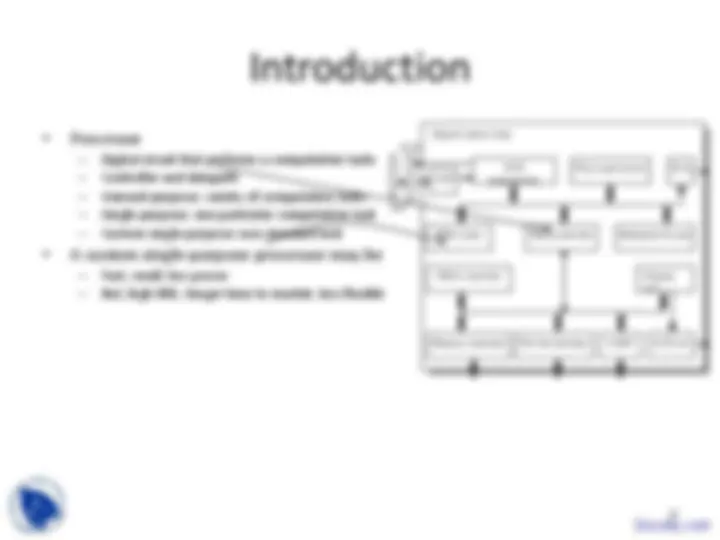
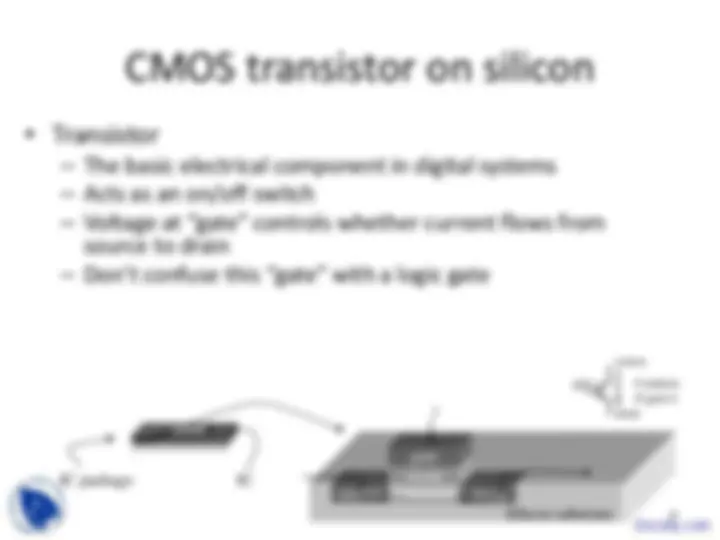
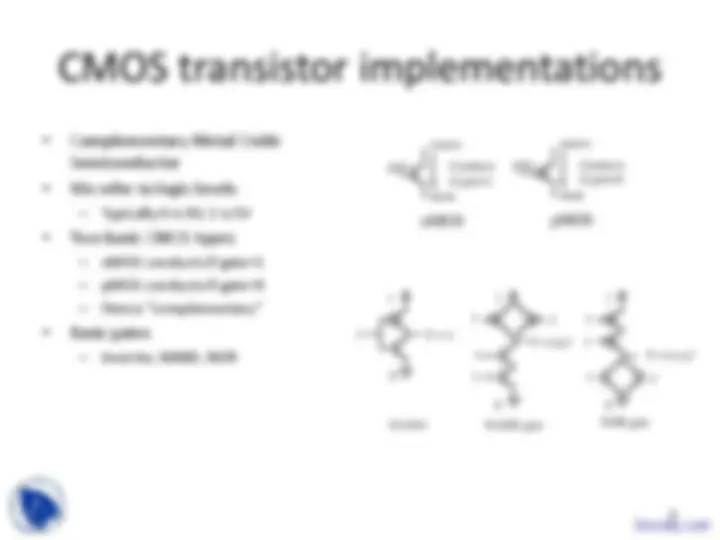
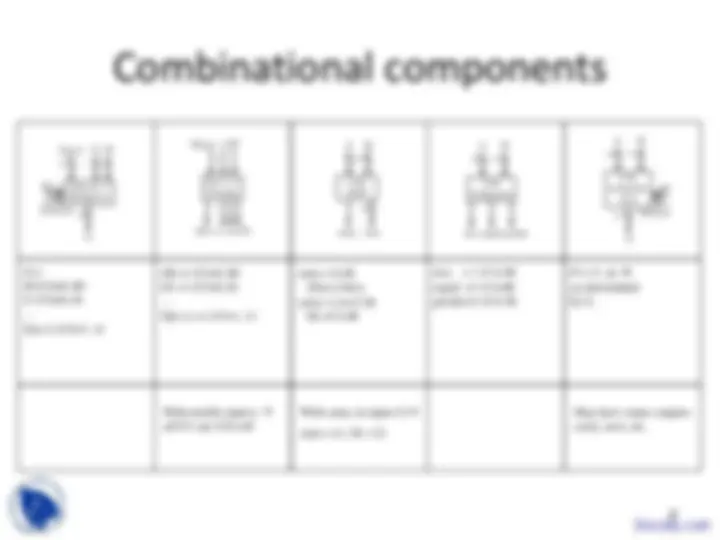
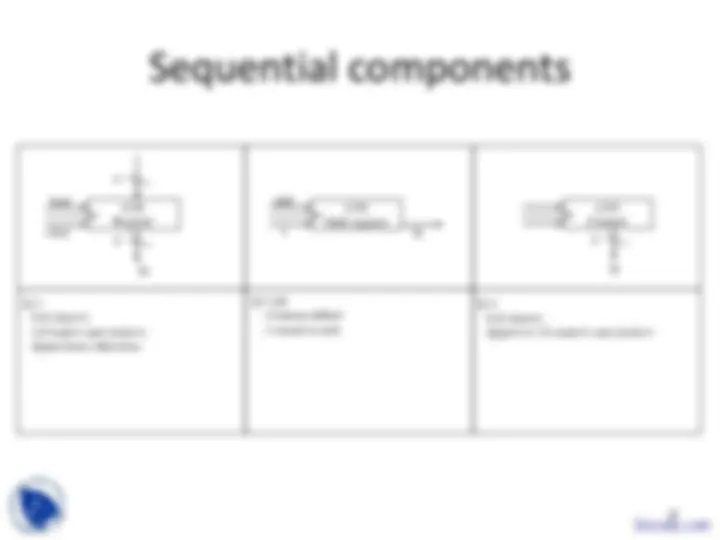

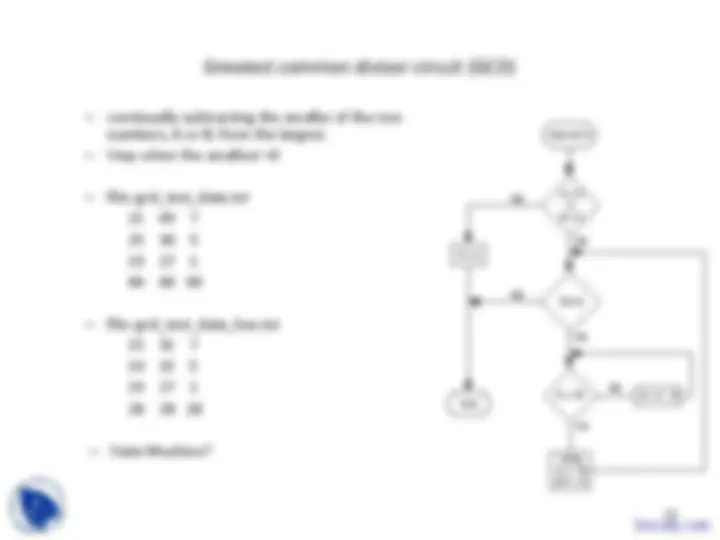
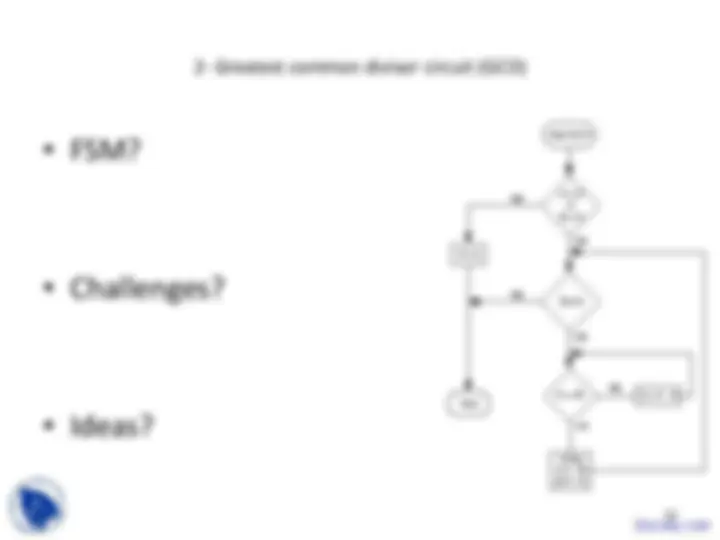
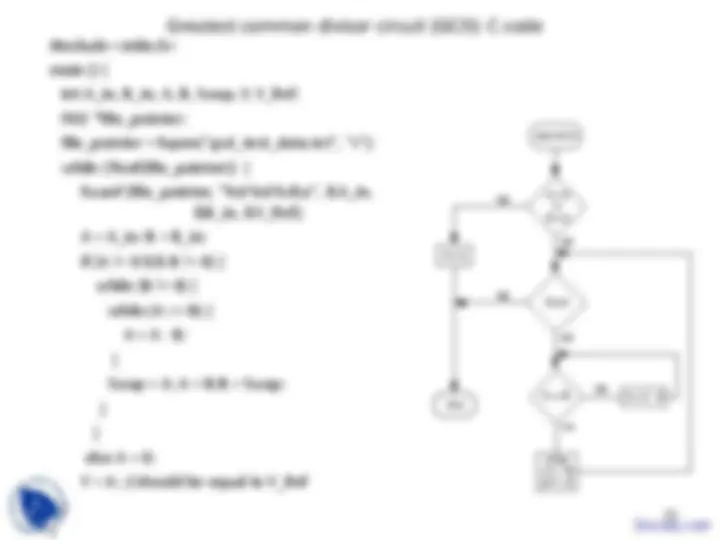
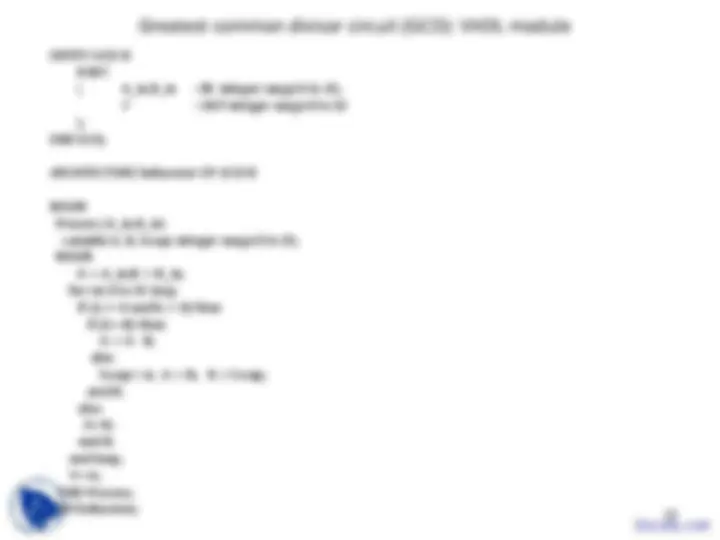


Study with the several resources on Docsity

Earn points by helping other students or get them with a premium plan


Prepare for your exams
Study with the several resources on Docsity

Earn points to download
Earn points by helping other students or get them with a premium plan
Community
Ask the community for help and clear up your study doubts
Discover the best universities in your country according to Docsity users
Free resources
Download our free guides on studying techniques, anxiety management strategies, and thesis advice from Docsity tutors
These are the Lecture Slides of Embedded System Design which includes Hardware Design, Elevator Controller, Simple Elevator Controller, Try Capturing, Unit Control, Request Resolver, Sequential Program Model, Partial English Description, System Interface etc. Key important points are: Hardware Design, Embedded Processors, Combinational Logic, Sequential Logic, Custom Single Purpose, Processor Design, Single Purpose Processor, Low Power, Less Flexible, Controller and Datapath
Typology: Slides
1 / 18

This page cannot be seen from the preview
Don't miss anything!











gate
source
drain
Conducts if gate=
Semiconductor
x (^) F = x'
inverter
F = (xy)'
x
x y
y
NAND gate
F = (x+y)' x (^) y
x
y
NOR gate
gate
source
drain
Conducts if gate=
gate
source
drain
Conducts if gate=
A) Problem description
y is 1 if a is to 1, or b and c are 1. z is 1 if b or c is to 1, but not both, or if all are 1.
D) Minimized output equations
a
y bc
y = a + bc
00 0
1
z
z = ab + b’c + bc’
a
bc
C) Output equations
y = a'bc + ab'c' + ab'c + abc' + abc
z = a'b'c + a'bc' + ab'c + abc' + abc
B) Truth table
Inputs a b c
Outputs y z
E) Logic Gates
a b c
y
z
With enable input e all O’s are 0 if e=
With carry-in input Ci sum = A + B + Ci
May have status outputs carry, zero, etc.
I0 if S=0.. I1 if S=0.. … I(m-1) if S=1..
O0 =1 if I=0.. O1 =1 if I=0.. … O(n-1) =1 if I=1..
sum = A+B (first n bits) carry = (n+1)’th bit of A+B
less = 1 if AB
O = A op B op determined by S.
n-bit, m x 1 Multiplexor
O
…
S
S(log m)
n
n
I(m-1) I1^ I … log n x n Decoder …
O(n-1) O1 O
I(log n -1)^ I …
n-bit Adder
n
A (^) B
n
carry sum
n-bit Comparator
n n
A B
less equal greater
n bit, m function ALU
n n
A B
…
S
n^ S(log m)
O
A) Problem Description
You want to construct a clock divider. Slow down your pre- existing clock so that you output a 1 for every four clock cycles
x=
x=0 x=
x=
a=1 a=
a=
a=
a=
a=
a=
a=
B) State Diagram
C) Implementation Model
Combinational logic
State register
a x
D) State Table (Moore-type)
Inputs Q1 Q0 a
Outputs I1 I
x
I1 = Q1’Q0a + Q1a’ + Q1Q0’
a 00 01 11 10
a 1
(^0) I0 = Q0a’ + Q0’a
1
x = Q1Q
x
a
Q1Q
E) Minimized Output Equations F) Combinational Logic
a
x
Greatest common divisor circuit (GCD)
2- Greatest common divisor circuit (GCD)
Greatest common divisor circuit (GCD): Verilog module
module GCD_ALG(A_in,B_in,Y);
parameter Width = 8;
input [Width-1:0] A_in, B_in;
output [Width-1:0] Y;
reg [Width-1:0] A, B, Swap, Y;
always @(A_in)// or B) begin
begin
A = A_in; B = B_in;
if (A != 0 && B != 0)
while (B != 0) begin
while (A >= B) A = A - B;
Swap = A; A = B; B = Swap;
end
else
A = 0;
Y = A;
end
endmodule 16
Greatest common divisor circuit (GCD): Verilog module